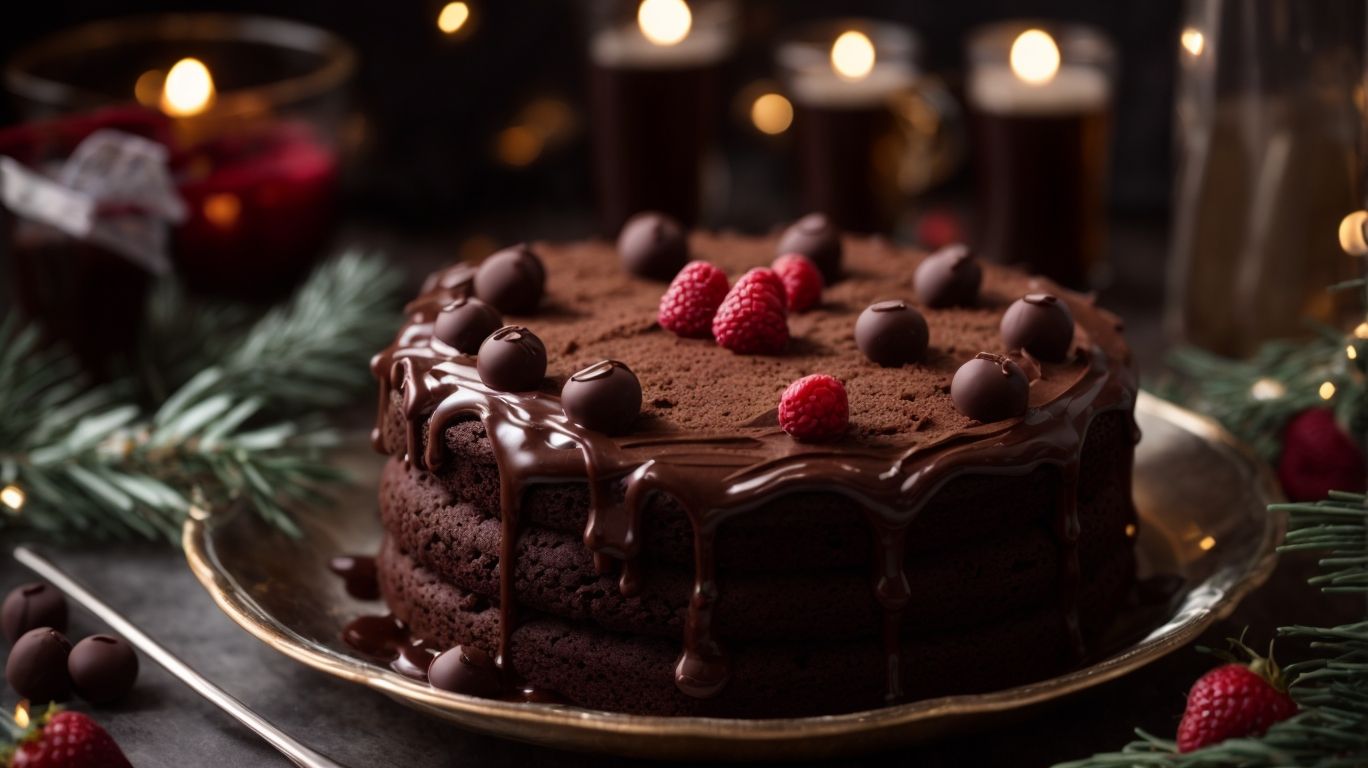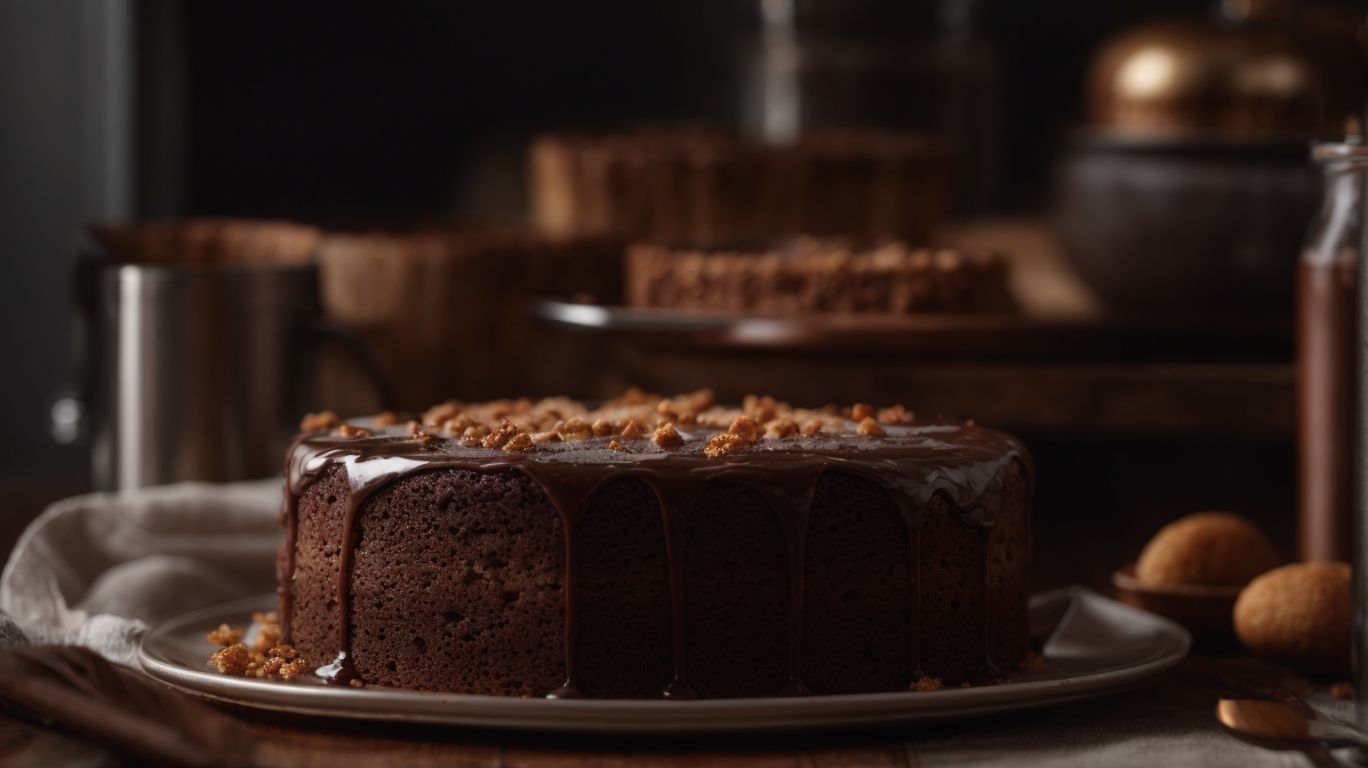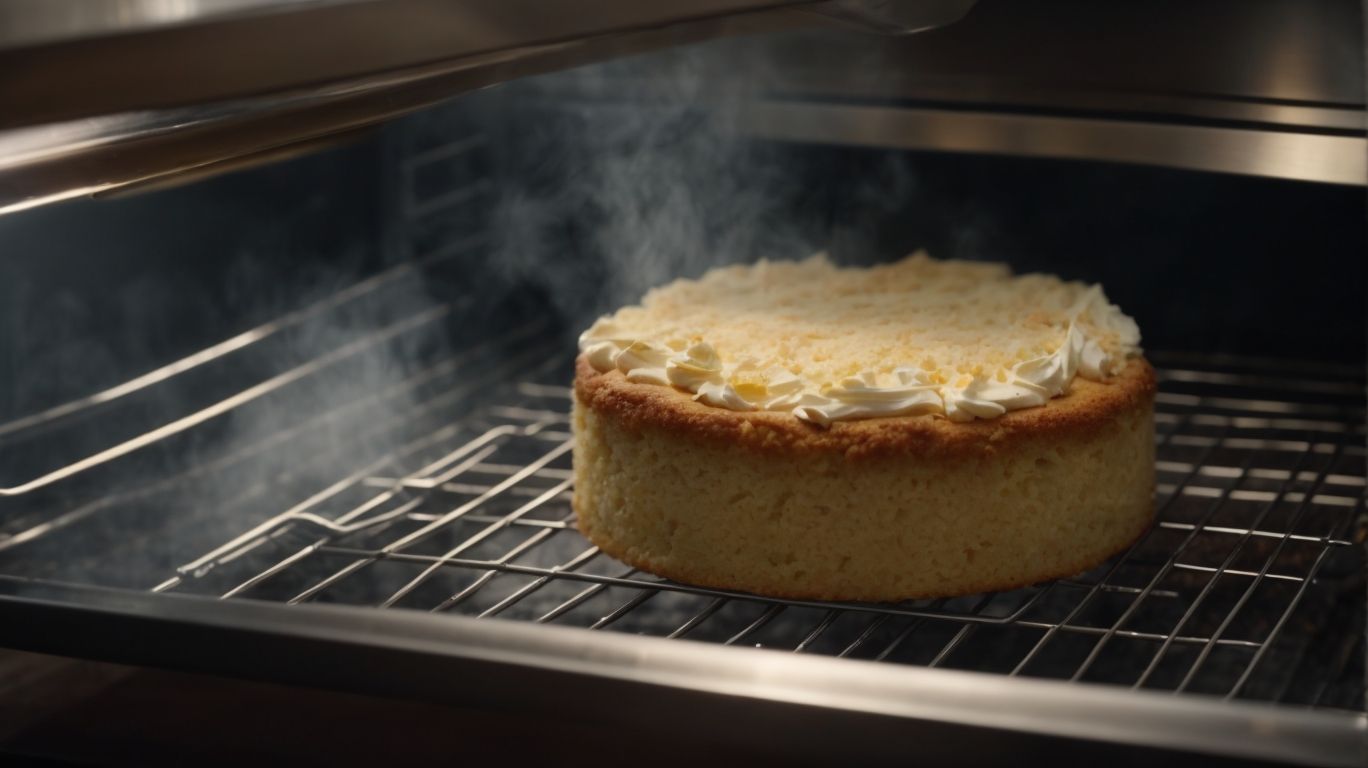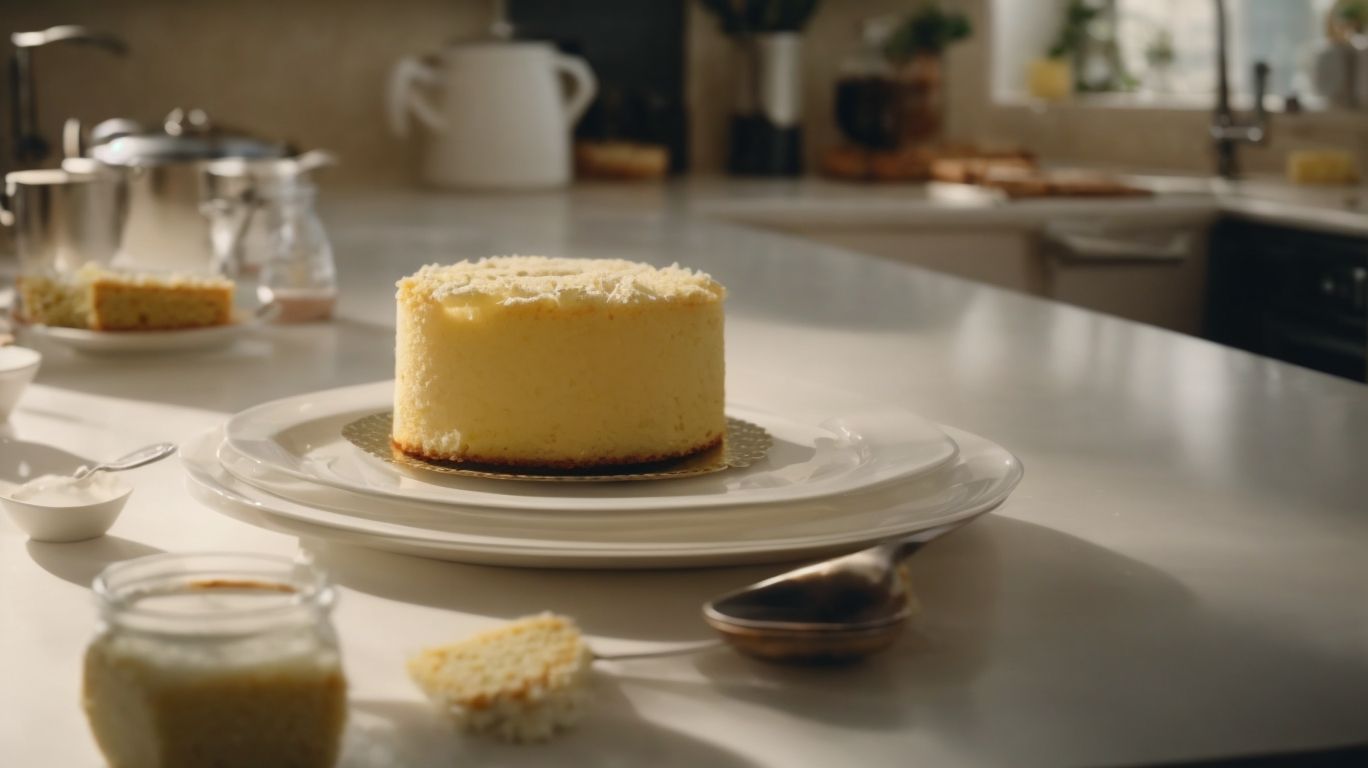How to Bake a Cake Without Butter?
Are you curious about baking a cake without butter? Whether you have health concerns, dietary restrictions, or simply want to try something new, there are plenty of alternatives to butter that can still result in delicious and moist cakes.
In this article, we will explore why butter is used in baking, reasons to bake without butter, various alternatives to butter, tips for substituting butter with these alternatives, and even provide some mouth-watering recipes for butter-less cakes.
Let’s get started on your butter-free baking journey!
Key Takeaways:
What is Butter and Why is it Used in Baking?

Credits: Poormet.Com – Bobby Nguyen
Butter is a versatile ingredient widely used in baking due to its unique ability to add richness, flavor, and moisture to various baked goods.
Regarding baking, the role of butter extends beyond just taste. It acts as a tenderizer, helping to create a soft and delicate crumb texture in cakes and cookies. Butter also plays a crucial role in leavening, especially when used in combination with baking powder, resulting in lighter and airier baked treats.
The type of butter used can greatly impact the final outcome of a recipe. Unsalted butter is preferred in baking to control the salt content, while salted butter can be used to enhance the flavor profile in certain dessert recipes.
Butter serves as a flavor carrier, helping to distribute the taste of other ingredients such as vanilla extract evenly throughout the batter. Its creamy texture blends seamlessly with all-purpose flour, creating a uniform dough consistency that bakes to perfection. Whether it’s to grease pans, cream with sugar, or create flaky layers in pastries, butter truly is a baking essential.
Why Bake Without Butter?

Credits: Poormet.Com – Ryan Hernandez
While butter is a common baking ingredient, there are various reasons one might choose to bake without it, such as health concerns, dietary restrictions, or even cost and availability factors.
For individuals with health concerns, opting for alternatives like oil, applesauce, or Greek yogurt can offer a healthier option while maintaining the desired texture and flavor in baked goods. Some may have dietary restrictions that prohibit the use of butter, making these substitutes crucial for enjoying homemade treats. Choosing oil over butter can also be an economic choice, as certain oils may be more budget-friendly, providing a practical solution for those watching their expenses.
Health Concerns
Health concerns play a significant role in the decision to bake without butter as individuals seek healthier alternatives for their baked treats.
Butter is often criticized for its high levels of cholesterol and saturated fats, which can contribute to heart disease and other health issues when consumed in excess. By opting for alternatives such as oil, avocado, or mashed bananas in baking recipes, individuals can reduce their intake of unhealthy fats while still achieving delicious results.
Dietary Restrictions
Dietary restrictions, such as lactose intolerance or vegan preferences, often necessitate the exploration of butter-free baking options to accommodate diverse dietary needs.
Regarding baking without butter, there are fantastic alternatives that not only cater to different diets but also bring unique flavors to your creations.
- Coconut oil is a popular go-to replacement for butter in vegan and dairy-free recipes, adding a delicious hint of coconut essence.
- Almond flour, on the other hand, is a versatile ingredient that lends a rich, nutty taste and moist texture to baked goods.
- Incorporating vanilla extract can elevate the flavors in butter-free recipes, ensuring that each bite is filled with a delightful aroma.
Availability or Cost
Factors such as the availability and cost of butter may prompt bakers to seek out alternative ingredients that offer similar results without the associated expenses.
One versatile substitute for butter in baking is olive oil, which provides a unique flavor profile and added health benefits. Replacing butter with olive oil can be a cost-effective option that still yields moist and delicious results. Another economical alternative is using applesauce as a butter substitute, especially in recipes like muffins and cakes. Applesauce adds moisture and a hint of sweetness without the need for extra fat.
- Almond meal can be an excellent substitute for traditional flour in gluten-free baking and adds a nutty flavor profile to your baked goods. While almond meal might be slightly pricier than all-purpose flour, its nutrient-rich composition adds value to your final product.
- Swapping out sugar for maple syrup can also be a cost-effective choice. Maple syrup provides a natural sweetness and imparts a distinct flavor, making it a popular alternative sweetener in many baked goods recipes.
What are the Alternatives to Butter in Baking?
When baking without butter, several alternatives can be used to maintain texture, flavor, and moisture in the final product, including oil, applesauce, avocado, Greek yogurt, and more.
Another excellent butter substitute in baking is coconut oil. Its slightly sweet and tropical flavor can enhance dishes like coconut macaroons or tropical-themed cakes.
For a nutty twist, consider using almond butter in place of butter in cookie recipes. The rich, nutty taste of almond butter adds a unique depth of flavor to baked goods.
Additionally, mashed bananas can serve as a natural butter replacement, contributing natural sweetness and moisture to recipes like banana bread. Experimenting with these alternatives can lead to delightful new flavor profiles and textures in your baked creations.
Oil
Oil is a popular butter substitute in baking, known for its ability to provide moisture, texture, and tenderness to cakes, cookies, and other baked goods.
When using vegetable oil in place of butter, it’s important to note that vegetable oil is a liquid fat, which can result in a different consistency in the final product compared to using solid butter. Its neutral flavor and ability to keep baked goods moist make it a versatile choice.
On the other hand, coconut oil can add a subtle coconut flavor to your bakes and works best in recipes where that flavor complements the other ingredients.
Meanwhile, olive oil can bring a fruity and distinct taste, so it’s ideal for recipes like olive oil cake where its unique flavor profile is a showcase.
Applesauce
Applesauce serves as a versatile butter substitute in baking, imparting natural sweetness, moisture, and a hint of fruity flavor to a wide range of recipes.
One of the key advantages of using applesauce in baking is its ability to reduce the fat content while still maintaining a moist and delicious texture in your baked goods. When combined with warm spices like cinnamon and nutmeg, unsweetened applesauce can elevate the flavor profile of muffins, cakes, and cookies, giving them a cozy, aromatic essence.
Avocado
Avocado can be a surprising yet effective butter substitute in baking, adding a unique creaminess, richness, and nutritional boost to various sweet and savory treats.
When ripe avocado is mashed, it transforms into a velvety base that blends beautifully into recipes, especially in desserts like a decadent chocolate avocado cake. The mashed avocado not only lends a moist texture but also boosts the nutritional value by adding healthy fats. The creamy consistency of mashed avocado mimics the richness of butter, making it an ideal ingredient for health-conscious bakers looking to create indulgent yet wholesome treats.
Greek Yogurt
Greek yogurt offers a tangy and creamy alternative to butter in baking, contributing moisture, richness, and a hint of acidity to various recipes.
One of the key benefits of using plain Greek yogurt in place of butter is its protein content, which adds nutritional value to your baked treats. Whether you opt for the tang of plain Greek yogurt or the sweetness of honey Greek yogurt, the versatility it offers is unmatched.
Greek yogurt pound cake, for instance, showcases how this ingredient can result in a moist and flavorful dessert. The substitution can also affect the texture of your creations, yielding a slightly denser consistency with a light crumb that pairs perfectly with a cup of tea.
Bananas
Bananas can serve as a natural and nutritious butter alternative in baking, adding sweetness, moisture, and a distinct flavor profile to various desserts and baked treats.
Ripe bananas, when mashed, can replace butter in recipes like banana bread, muffins, and cookies, creating a healthier version without compromising on taste. The natural sweetness of ripe bananas enhances the overall flavor of the baked goods while providing a moist and tender crumb. Using mashed bananas in place of butter increases the nutritional value of the treats by adding essential vitamins, minerals, and fiber.
How to Substitute Butter with these Alternatives?
When substituting butter with alternatives in baking, it is essential to adjust measurements and consider the impact on moisture, texture, and overall flavor of the final product.
To successfully replace butter with alternatives like coconut oil, avocado, or applesauce, start by understanding the role of butter in your recipe. For example, butter adds richness and moisture. Baking soda can help compensate for some of the lost lift when butter is substituted. When using alternatives like almond flour in place of butter, consider tweaking proportions to maintain the right consistency. Additionally, coconut sugar can be a suitable replacement for white sugar when adjusting for the change in flavor profile.
Adjusting Measurements
When substituting butter in baking recipes, it’s crucial to adjust measurements accurately to maintain the desired texture, consistency, and flavor profile of the final product.
Choosing the right substitute for butter, such as coconut oil or almond meal, can significantly impact the overall outcome of your baked goods. For instance, almond meal provides a nutty flavor and a moist texture, while coconut oil adds a hint of tropical essence.
Considering conversion ratios is essential; typically, 1 cup of butter is equivalent to 3/4 cup of oil. This can vary based on the recipe and the substitute used. Maple syrup can also be a great addition to enhance sweetness and moisture in the absence of butter.
Maintaining Moisture
One key aspect of substituting butter in baking is ensuring the moisture content of the final product remains optimal by choosing the right alternative and adjusting other recipe components accordingly.
When replacing butter with coconut milk in a recipe, the high fat content and creamy texture of the coconut milk help maintain moisture in the baked goods. Incorporating honey as a sweetener not only adds flavor but also contributes to the moistness of the final product.
Using tapioca flour in conjunction with butter alternatives can enhance the texture and help retain moisture. When mixing the ingredients, be sure to blend them gently to avoid overworking the batter, which could result in a dry outcome.
Tips for Baking a Cake Without Butter

Credits: Poormet.Com – Alexander Jackson
When baking a cake without butter, it’s important to follow specific tips and techniques to ensure a successful outcome that is moist, flavorful, and satisfying.
One key ingredient that can help achieve a moist texture in a butterless cake is sour cream. Its richness adds depth of flavor and helps maintain moisture levels. To enhance the taste further, consider incorporating almond extract for a subtle nutty note.
Lining your cake pan with baking parchment is crucial to prevent sticking and ensure an easy release once the cake is baked. Proper mixing methods, such as gently folding in the dry ingredients to avoid overworking the batter, play a significant role in the final texture.
Choosing the Right Alternative
Selecting the appropriate butter substitute is crucial when baking a cake without butter, as it can significantly impact the flavor, texture, and overall quality of the final dessert.
When exploring coconut cream as a butter alternative, you’ll find its subtle tropical notes can add a delightful creaminess to your cakes, perfect for recipes with a hint of exotic flavors.
On the other hand, almond butter offers a rich, nutty essence, enhancing the overall depth of your baked goods, especially chocolate-based cakes.
For those seeking a gluten-free option, oat flour can provide a hearty, slightly nutty undertone, ideal for creating moist and wholesome cake textures that pair well with fruity components.
Each substitute brings its unique characteristics to the baking process, allowing you to tailor your creations to suit your taste preferences and dietary requirements.
Mixing Techniques
Using the correct mixing techniques is essential when preparing a cake without butter to ensure proper incorporation of ingredients, optimal texture, and desired crumb structure.
Blending is a crucial step in butter-less cake recipes, seamlessly combining wet and dry ingredients like rice flour and apple cider vinegar. This method prevents overmixing and leads to a light, tender crumb.
Folding, on the other hand, requires gently incorporating whipped cream or other light ingredients into the batter without deflating them, ensuring a fluffy and airy final product.
Creaming involves beating sugar and liquids to create a smooth mixture; this technique is key in achieving a moist and flavorful cake. Each method contributes to the overall mouthfeel and taste of the finished dessert.
Baking Time and Temperature
Adjusting baking time and temperature is crucial when baking a cake without butter to ensure even cooking, proper rise, and retention of moisture in the absence of traditional fat.
When working with butter-less cake recipes, it is essential to consider using alternative fats such as vegetable oil or applesauce, as they can impact the overall texture and consistency of the cake. To compensate for the lower fat content, you may need to slightly increase the baking time and reduce the oven temperature to prevent excessive browning or drying out of the cake. Experimenting with different baking pans, like non-stick or silicone molds, can also influence the baking process, requiring adjustments in time and temperature settings to achieve optimal results.
Recipes for Butter-less Cakes
Explore a variety of delicious recipes for butter-less cakes that cater to different dietary preferences and flavor profiles, such as Vegan Chocolate Cake, Olive Oil Lemon Cake, and more.
Indulge your taste buds with a Vegan Chocolate Cake that is rich and moist, made using coconut flour and dairy-free chocolate. The Olive Oil Lemon Cake offers a delightful tangy twist, incorporating flavorful chia seeds for added texture. For a sweet touch, try the Honey Drizzle cake – a soft, sweet treat sweetened with pure, natural honey. Each recipe provides a unique balance of flavors and ingredients, ensuring a delightful experience for every cake enthusiast.
Vegan Chocolate Cake
Indulge in the decadent goodness of a Vegan Chocolate Cake, a butter-less delight that promises rich chocolate flavor, moist crumb, and a creamy topping of dairy-free whipped cream.
For this delightful confection, start by preheating your oven and greasing a round cake pan with a light dusting of cocoa powder. In a large mixing bowl, whisk together almond milk, sugar, and oil until well combined. Sift in the flour, cocoa powder, and baking powder, mixing gently to avoid overworking the batter. The secret ingredient for binding this cake without eggs is aquafaba, the liquid from a can of chickpeas – it may sound unconventional, but it works wonders!
Olive Oil Lemon Cake
Savor the citrusy delight of an Olive Oil Lemon Cake, a butter-less confection that combines the fruity tang of lemon with the smooth richness of olive oil for a moist and zesty dessert perfect for any celebration.
Using whole wheat flour in this recipe adds a nutty depth to the cake, complementing the bright flavors of lemon and olive oil. The addition of Greek yogurt not only enhances the moisture but also provides a subtle tang that balances out the sweetness. To elevate the cake further, a luscious lemon icing glaze is drizzled over the top, bringing a touch of sweetness while highlighting the citrus notes. The combination of these ingredients creates a harmonious blend of flavors and textures that make this Olive Oil Lemon Cake a delectable treat for any occasion.
Avocado Pound Cake
Experience the velvety smoothness of an Avocado Pound Cake, a butter-less treat that boasts the natural creaminess of avocado, the subtle sweetness of honey, and the richness of coconut flour for a unique and decadent birthday cake option.
Adding a touch of almond extract to the batter enhances the nutty undertones, complementing the avocados beautifully. The use of coconut sugar in place of traditional refined sugar provides a healthier twist without compromising on flavor.
Once baked to perfection, this moist and tender pound cake can be topped with a luscious avocado frosting, creating a stunning finish that will impress even the most discerning dessert enthusiasts. Share this delightful dessert at your next gathering and watch it disappear in minutes!
Applesauce Spice Cake
Delight in the warm flavors of fall with an Applesauce Spice Cake, a butter-less creation infused with aromatic spices, sweet applesauce, and a hint of maple sweetness for a cozy and comforting family dessert.
This moist and flavorful cake embodies the essence of autumn, combining the gentle heat of cinnamon with the subtle warmth of nutmeg and allspice. The applesauce not only adds a natural sweetness but also ensures a tender crumb that melts in your mouth with each bite. To top it all off, a luscious applesauce frosting drizzled over the cake, made with a touch of maple syrup, enhances the richness and makes it a truly irresistible treat for any occasion.
Banana Walnut Cake
Enjoy the classic combination of bananas and walnuts in a delightful Banana Walnut Cake, a butter-less creation bursting with natural sweetness, crunchy walnuts, and a moist crumb that is perfect for a simple yet satisfying dessert.
This timeless recipe captures the essence of comfort baking, blending ripe bananas for incredible moisture with toasty walnuts for a delightful crunch. The secret lies in the heavenly blend of maple syrup, which adds a depth of flavor, and the use of wholesome whole wheat pastry flour that gives a nutty undertone to the cake. The warm aroma of cinnamon-infused batter envelops your kitchen as the cake bakes, promising a treat reminiscent of indulgent banana bread.
Frequently Asked Questions
How can I bake a cake without butter?
Butter is a common ingredient in cake recipes, but it’s not a necessary one. There are several alternatives you can use to achieve the same texture and taste in your cake without using butter.
What can I substitute butter with in a cake recipe?
Some great substitutes for butter in cake recipes include applesauce, vegetable oil, coconut oil, and Greek yogurt. Each of these options will provide the necessary moisture and fat for your cake.
Will using a substitute for butter change the taste of the cake?
Yes, using a substitute for butter may alter the taste of your cake slightly. However, by choosing a substitute with a similar flavor profile, such as coconut oil or applesauce, you can still achieve a delicious and flavorful cake.
Can I use margarine instead of butter in a cake recipe?
Yes, margarine can be used as a substitute for butter in a cake recipe. However, keep in mind that margarine contains more water than butter, so you may need to adjust the measurements slightly.
How do I know if a cake is done baking without using butter?
The best way to determine if a cake is done baking is by inserting a toothpick into the center. If it comes out clean, the cake is done. You can also gently press the top of the cake to see if it springs back, which is another indication that it’s done.
Can I still frost a cake that was baked without butter?
Absolutely! You can still frost and decorate a cake that was baked without butter. Just make sure to use a frosting recipe that is compatible with the substitute you used in your cake. For example, if you used coconut oil, you can use a coconut oil-based frosting.

